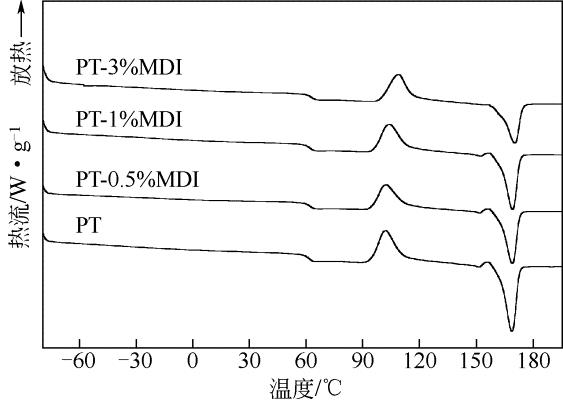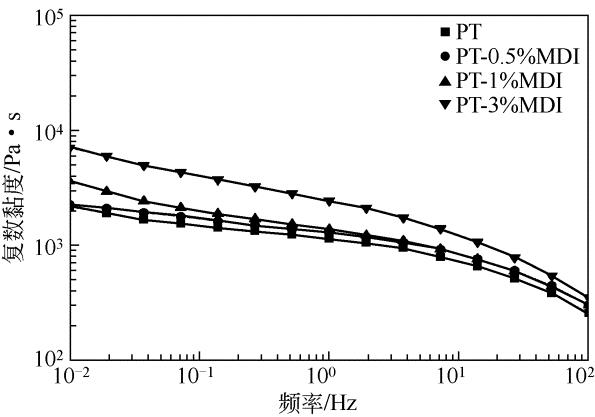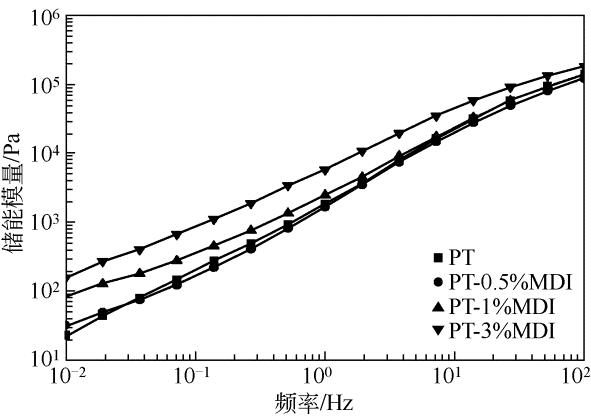| 1 |
罗婷, 顾林, 苏胜培, 等 . 基于低相对分子质量聚己内酯原位反应增容制备超韧聚乳酸[J]. 高分子材料科学与工程, 2018, 34(3): 122-126.
|
|
LUO T , GU L , SU S P , et al . Super-tough polylactide with low molecular weight poly(ε-caprolactone) by in situ reactive compatibilization[J]. Polymer Materials Science and Engineering, 2018, 34(3): 122-126.
|
| 2 |
GURUNATHAN T , CHUNG J S , NAYAK S K . Reactive compatibilization of biobased polyurethane prepolymer toughening polylactide prepared by melt blending[J]. Journal of Polymers and the Environment, 2016, 24:287-297.
|
| 3 |
龚新怀, 辛梅华, 李明春, 等 . 茶粉/聚乳酸复合材料的增韧改性[J]. 化工进展, 2016, 35(10): 3273-3280.
|
|
GONG X H , XIN M H , LI M C , et al . Toughening of tea dust/poly(lactic acid) composites[J]. Chemical Industry and Engineering Progress, 2016, 35(10): 3273-3280.
|
| 4 |
李冲, 何子伟, 吴颖岚, 等 . 增容剂改性PLA/PBAT共混物的制备及性能研究[J]. 塑料工业, 2018, 46(1): 24-28.
|
|
LI C , HE Z W , WU Y L , et al . Preparation and properties of PLA/PBAT blends modified with compatibilizer[J]. China Plastics Industry, 2018, 46(1): 24-28.
|
| 5 |
邹国享, 屈鑫, 赵彩霞, 等 . 聚乳酸/右旋聚乳酸共混物的耐热性能及结晶性能[J]. 高分子材料科学与工程, 2018, 34(4): 69-74.
|
|
ZOU G X , QU X , ZHAO C X , et al . Thermal stability and crystallization behavior of poly(lactic acid)/poly(D-lactic acid) blends[J]. Polymer Materials Science and Engineering, 2018, 34(4): 69-74.
|
| 6 |
赵彩云, 徐艳, 王潮霞 . 聚氨酯-聚乳酸共混物的制备及性能[J]. 复合材料学报, 2017, 34(9): 2030-2037.
|
|
ZHAO C Y , XU Y , WANG C X . Preparation and properties of thermoplastic polyurethane-polylactic acid blends[J]. Acta Materiae Compositae Sinica, 2017, 34(9): 2030-2037.
|
| 7 |
赵翡 . PLA/TPU共混物的反应挤出制备及性能研究[D]. 广州:华南理工大学, 2015.
|
|
ZHAO F . Preparation and properties of PLA/TPU blends via reactive extrusion[D]. Guangzhou:South China University of Technology, 2015.
|
| 8 |
贾仕奎, 王忠, 朱艳, 等 . 聚乳酸/聚氨酯共混物的力学行为与形态研究[J]. 中国塑料, 2017, 31(3): 35-39.
|
|
JIA S K , WANG Z , ZHU Y , et al . Mechanical behaviors and morphology evolution of poly(lactic acid)/thermoplastic polyurethane blends[J]. China Plastics, 2017, 31(3): 35-39.
|
| 9 |
林鸿裕, 夏新曙, 杨松伟, 等 . 基于熔融沉积成型的聚乳酸/热塑性聚氨酯的制备与表征[J]. 高分子材料科学与工程, 2018, 34(5): 105-110.
|
|
LIN H Y , XIA X S , YANG S W , et al . Preparation and characterization of poly(lactic acid)/thermoplastic polyurethane based on fused deposition modeling[J]. Polymer Materials Science and Engineering, 2018, 34(5): 105-110.
|
| 10 |
DOGAN S K , REYES E A , RASTOGI S , et al . Reactive compatibilization of PLA/TPU blends with a diisocyanate[J]. Journal of Applied Polymer Science, 2014, 131(10): 245-253.
|
| 11 |
LI W , LIU J , ZHANG X , et al . Synergetic effect of polyamide 1212 and diisocyanate on performance improving of thermoplastic polyurethane via melt compounding[J]. Journal of Applied Polymer Science, 2012, 125(2): 1077-1083.
|
| 12 |
IMRE B , BEDO D , DOMJAN A , et al . Structure, properties and interfacial interactions in poly(lactic acid)/polyurethane blends prepared by reactive processing[J]. European Polymer Journal, 2013, 49(10): 3104-3113.
|
| 13 |
侯家瑞, 段咏欣 . MDI对聚氨酯/聚乳酸热塑性弹性体的增容作用[J].青岛科技大学学报(自然科学版), 2014, 35(1): 48-52.
|
|
HOU J R , DUAN Y X . Compatibilizing effect of MDI on PU/PLA TPV[J]. Journal of Qingdao University of Science and Technology(Natural Science Edition), 2014, 35(1): 48-52.
|
| 14 |
ZHAO F , HUANG H X , ZHANG S D . Largely toughening biodegradable poly(lactic acid)/thermoplastic polyurethane blends by adding MDI[J]. Journal of Applied Polymer Science, 2015, 132(48): 42511.
|
| 15 |
SHI Y Y , DU X C , YANG J H , et al . Super toughened poly(L-lactide)/thermoplastic polyurethane blends achieved by adding dicumyl peroxide[J]. Polymer-Plastics Technology and Engineering, 2014, 53(13): 1344-1353.
|
| 16 |
KIM M W, HONG S M , LEE D, et al . Chain extension effects of para-phenylene diisocyanate on crystallization behavior and biodegradability of poly(lactic acid)/poly(butylene terephthalate) blends[J]. Advanced Composite Materials, 2010, 19(4): 331-348.
|
| 17 |
LIU M J , CHEN S C , YANG K K , et al . Biodegradable polylactide based materials with improved crystallinity, mechanical properties and rheological behaviour by introducing a long-chain branched copolymer[J]. Royal Society of Chemistry Advances, 2015, 5(52): 42162-42173.
|
 ),Yaqiong LI,Maoyong HE,Zhenzhong LI(
),Yaqiong LI,Maoyong HE,Zhenzhong LI( )
)






